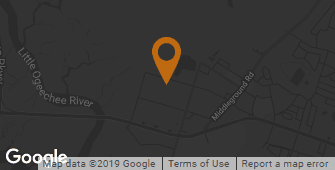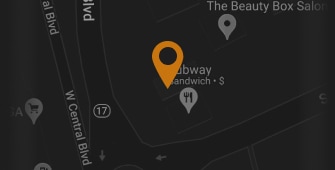Jenkins: Don’t scrimp on Savannah’s urban forest
Posted: August 31, 2013 – 11:47pm | Updated: September 1, 2013 – 12:27am
By KAREN JENKINS
As we reflect on last week’s Chatham County jury decision to award a $12 million settlement to Shanta Greene who was maimed by a falling tree limb on Bee Road in 2010, the Savannah Tree Foundation expresses our deepest sympathy to Ms. Greene and her family. No monetary value can offset the damage done to her or the costs she will experience for the rest of her life.
To maintain Savannah’s entire tree canopy, the City of Savannah and its Park and Tree Department need an appropriate financial commitment from the city along with community support. Savannah is fortunate that residents have made the urban forest a priority since the formation of the city’s Park and Tree Commission in 1896. Savannah’s Park and Tree Department is now managed by a well-trained and nationally recognized staff. Due to their dedication and the value our community places on our natural resources, Savannah is notably one of the most beautiful urban forests in the world.
Considering the value of trees economically and environmentally, it is imperative that the city allocate the funds to make trees a priority and enable the Park and Tree Department to execute tree maintenance and reforestation programs in line with the highest industry standards. It is the city’s responsibility to adequately maintain the tree canopy and protect residents to the extent possible from hazards.
The current conversation provides the city with the opportunity to ensure that going forward Savannah is a leader in best management practices for our urban forest.
It is essential that Park and Tree have the resources to be able to properly advise the city of required funding for satisfactory levels of care. Every tree should be in a database that allows Park and Tree to track each tree’s health and maintenance. This database has to be updated and managed so that basic tree care can be performed based on reporting from ongoing observation.
Tree care cannot be performed only in response to citizen 311 calls. As with all infrastructures, it is foolhardy and dangerous to defer proper care programs.
Savannah must demonstrate best practices to protect our trees and our citizens. Perhaps attorney Howard Spiva’s offer to re-employ another arborist within the Park and Tree Department could be extended to cover the costs of updating the city’s tree inventory database and the resources necessary to keep the database maintained hereafter.
In 2009, researchers with the U.S. Forest Service Southern Research Station in Athens calculated that Savannah’s 40,000-plus street trees were a $286 million asset, producing nearly $3.6 million in annual benefits — and returning $1.52 in benefits for every dollar invested in them. Calculated benefits include energy saved, storm water intercepted and property values increased.
Street trees represent fewer than half of Savannah’s 85,000 public trees, so the annual public benefits for all of the trees total much more than that, especially when you consider the enormous impact the trees have on Savannah’s thriving tourism industry. No one wants to imagine what Savannah might look like without its 85,000 public trees.
The Savannah Tree Foundation applauds the work of the city and recognizes the difficult balance of creating and maintaining one of the most beautiful urban forests in the world, while protecting citizens. Savannah Tree Foundation encourages the other eight governments within Chatham County to consider this challenge as well.
Karen Jenkins is the executive director of the Savannah Tree Foundation.
A Tale of 2 Cities in Savannah’s Urban Garden
This is a well written and well thought out article.
Karen Jenkins and the entire Savannah Tree Foundation are a blessing to Savannah. I am glad that our City has a citizens group who cares deeply for our trees.
We can’t extend our offer of money for “tree inventory” if the City won’t honor their word and pay the jury verdict.
We agree that trees should not be eliminated, only that they should be properly maintained. Safety MUST be the primary purpose of any government.
I do not fault Jerry Fleming nor any of the hard working tree workers. They are all good people who are well trained and dedicated to their jobs.
My concern is that Jerry Fleming, a nice man, was head of 5 Historic City cemeteries for many years and it kept him VERY busy full time… and he is now responsible for those same 5 cemeteries, and has been assigned responsibility for 1) 85,000 trees 2) 80 Parks 3) 60 monuments; and 4) 24 squares.
That much responsibility is impossible for one Director to oversee, this is the very reason Don Gardner became frustrated and left Savannah. What a sad loss.
Mr Fleming admitted under oath that Savannah has NO written, systematic, preventive maintenance plan to care for our trees since 2000.
Don Gardner had 3 to 4 crews on the street every day going street by street, tree by tree systematically visiting every tree for pruning and preventive maintenance.
Don Gardner created the only tree inventory data base ever done in Savannah.
The 311 system is inadequate and operates as a “reactive program”. The 311 system means some trees wont be visited or pruned for decades, the industry standards for live oaks is once every 5 to 7 years.
We offered to help bring Don Gardner back because the City of Savannah’s Park and Tree Department’s Master Tree Plan is a proactive, written, systematic plan intended to provide preventive maintenance and tree pruning in an organized way to intercept hazards.
Anyone can drive or walk through Savannah and clearly see that Savannah has 2 standards of tree care and safety, one is downtown historic district where 12 million tourist visit and spend billions of dollars and the 2nd and lower standard is where we all live.
Arborist at trial testified that Bee Road, White Bluff and many of our streets have trees that,”scare” arborist.
The tree that harmed Shanta Greene was named “The Scary tree” by residence. We don’t see any scary trees in the historic district.
We don’t need politics running our safety and tree care in Savannah.
Sadly, I fear that the biggest verdict is yet to come. I pray I am wrong.
Howard Spiva











